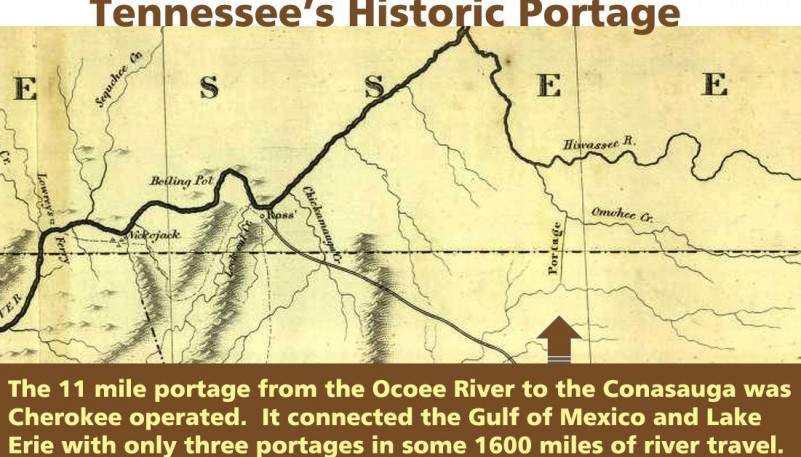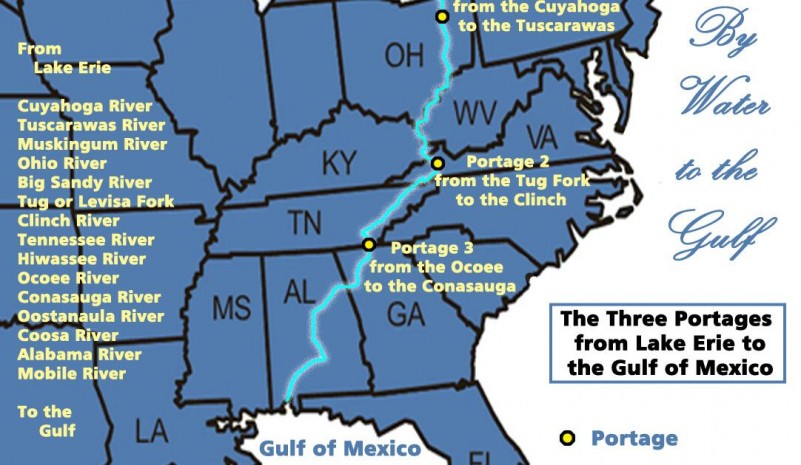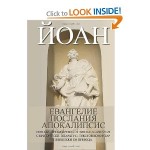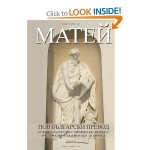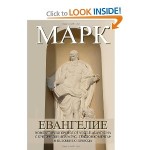REMEMBERING: Bishop John F. Corcoran
John Corcoran Obituary
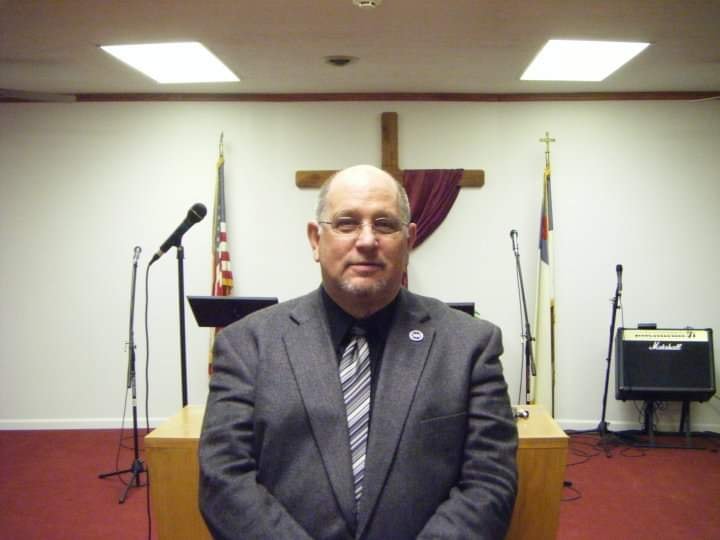
John Francis Corcoran: Bishop, Pastor, LCDC III Counselor (June 26, 1947 – March 17, 2023)
John Francis Corcoran was called home to Jesus on March 17, 2023, after a lengthy and well fought battle with cancer.
John was born in Waterbury Connecticut on June 26, 1947, to John and Eugenia Corcoran, the eldest of their six children.
After high school, John joined the Air Force serving two tours in Viet Nam at Ben Hoa, as well as Greece and Germany. He retired as Master Sargent after 23 years, his last post was Wright Patterson AFB in Dayton, Ohio. During his career in the Air Force John had assignments as a recruitment officer and a Supply Officer, which took him overseas. John had a strong faith and was called to the ministry serving as Church of God Ministry to the Military from 1978 to 1985 leading a church in Greece. John earned many medals and awards during his service. John became a Church of God ordained Bishop in 1988, and served in many pastoral assignments, his last at Rejoicing Life Church of God in Miamisburg, Ohio where he served a diverse congregation for over 30 years before retiring. John had a love of learning earning a Bachelor of Science degree in Biblical Studies and Pastoral Ministries in 1986 from Lee University. He went on to continue his education obtaining a Master’s Degree in 2002 in Counseling from the Church of God Theological Seminary, and was in process of concluding his dissertation for the doctorate degree when he fell ill. John had a very active and full life.
He had a love of God and people and poured himself into serving others within the community. He served at Kettering Behavioral Center working as a Psycho-educational Group Leader and Adult Behavioral Care, Chaplain and Firefighter for Xenia Township’s Fire Department, served also with Scioto County Sheriff and Miamisburg Police Departments as Chaplain, and a Crisis Team Management Leader. His biggest love, outside of pastoring, was teaching Chaplain classes to the many churches in the Midwest area.
He is survived by his devoted and beloved wife Lois, sons James (Lisa) and Doug, daughter Joan (Ryan)Bloomingdale, grandchildren Jonathon Hudson, Julia Schmidt (Brian), Kaitlyn Martinez (Victor), Alexandria Corcoran, Elizabeth Robertson, Justin Corcoran, Kieron, Jaxson and Weston Corcoran, great grandchildren Lilliana and Lucca Martinez and Hazel Schmidt, sisters and brothers Cathy, Jamie, Patricia, Maureen, and Bobby of Connecticut. Maureen’s husband, Art, and John were very close friends.
He was preceded in death by his first wife, Julie Ann, his daughter Elizabeth, sister Mary Jean, and parents John and Eugenia Corcoran.
John was a great man, a faithful servant of God and a man of many talents. He has left a huge hole in our hearts and lives, but we rejoice in his graduation and in the echo of his favorite verse from Philippians 4:8: “Finally brethren, whatsoever things are true, whatsoever things are honest, whatsoever things are just, whatsoever things are pure, whatsoever things are lovely, whatsoever things are of a good report: if there be any virtue, and if there be any praise, think on these things.”
Military Honors will be held by the Combined Honor Guard along with a Celebration of Life beginning at 4:00 p.m. on Saturday, May 6, 2023, at the Grace Baptist Church, 851 S. Elm St., West Carrollton with Pastor Randy Ballard and Pastor Doug Criswell officiating. The family will receive friends from 3:00 p.m. to 4:00 p.m. (1 hour prior to service) on Saturday at the church.
Inurnment will take place at the Sarasota National Cemetery in Sarasota, FL.
Please share your condolences at www.swartfuneralhome.com. Sympathy, Love, and Thinking of You cards may be sent to The Family of Pastor John F. Corcoran, C/O Swart Funeral Home, 207 E. Central Ave., West Carrollton, Ohio 45449
Ocoee Church of God Celebrates 40 Years
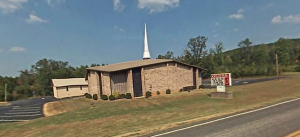 Historical Significance of the Tennessee/Georgia Old Federal Road in the Trail of Tears and its Connection to the Church of God
Historical Significance of the Tennessee/Georgia Old Federal Road in the Trail of Tears and its Connection to the Church of God
New Echota, Georgia was the capital of the Cherokee Nation from 1825 to 1838. This is the location where the Treaty of New Echota or the Treaty of 1835 was signed on December 29, 1835 by U.S. government officials and representatives of a minority Cherokee political faction called “The Treaty Party” or “Ridge Party”. This treaty was not approved by the Cherokee National Council nor signed by Principal Chief John Ross. Regardless, it established terms under which the Cherokee Nation were to receive a sum not exceeding five millions dollars for surrendering their lands and possessions east of the Mississippi river to the U.S. Government and agreeing to move to the Indian Territory west of the Mississippi River, which later became part of Oklahoma.
The Red Clay State Historic Park, located 17 miles southwest of the Church of God Headquarter in Cleveland, Tennessee, marks the last location of the Cherokee councils where Chief John Ross and nearly 15,000 Cherokees rejected the proposed Treaty of 1835. Despite the questionable legitimacy of this Treaty, in March 1838, it was amended and ratified by the U.S. Senate and became the legal basis for the forcible removal of the Cherokee Nation known as the Trail of Tears. The name came from the Cherokees who called the removal “Nunna-da-ul-tsun-yi,” which means “the place where they cried.” The last pieces of land controlled by the Cherokee Nation at that time were North Georgia, Northern Alabama and parts of Tennessee and North Carolina. The forced journey was through three major land routes. Each route could have taken some 1,000 miles and over four months to walk. The removal of the Cherokees and other tribes from their homelands in the Southeast began May 16, 1838.
The Georgia Road or present day Federal Road was a route of the Trail of Tears that the Cherokee people walked during their forced removal from their homelands. The route was built from 1803 to 1805 through the newly formed Cherokee Nation on a land concession secured with the 1805 Treaty of Tellico with the agreement that the U.S. Government would pay the Cherokee Nation $1,600.00. The Treaty was signed on October 25, 1805 at The Tellico Blockhouse (1794 – 1807) – an early American outpost located along the Little Tennessee River in Vonore, Monroe County, Tennessee that functioned as the location of official liaisons between the United States government and the Cherokee. The route was originally purposed to be a mail route because of the great need to link the expanding settlements during the westward expansion of the U.S. colonies. It was in 1819 after improvements to the road that it was called “the Federal Road”.
The Tellico Blockhouse was the starting point for the Old Federal Road, which connected Knoxville to Cherokee settlements in Georgia. The route ran from Niles Ferry on the Little Tennessee River near the present day U.S. Highway 411 Bridge, southward into Georgia. Starting from the Niles Ferry Crossing of the Little Tennessee River, near the U.S. Highway 411 bridge, the road went straight to a point about two miles east of the present town of Madisonville, Tennessee. This location is 20 some miles north of the Tellico Plains area that marks the site of the beginning of the Church Cleveland, Tennessee. The road continued southward via the Federal Trail connecting to the North Old Tellico Highway past the present site of Coltharp School, intersected Tennessee Highway 68 for a short distance and passed the site of the Nonaberg Church. East of Englewood, Tennessee it continued on the east side of McMinn Central High School and crossed Highway 411 near the railroad overpass. Along the west side of Etowah, the road continued near Cog Hill and the Hiwassee River near the mouth of Conasauga Creek where there was a ferry near the site of the John Hildebrand Mill. From the ferry on the Hiwassee River the road ran through the site of the present Benton, Tennessee courthouse. It continued on Welcome Valley Road and then crossed the Ocoee River at the Hildebrand Landing. From this point the road ran south and crossed U.S. Highway 64 where there is now the River Hills Church of God formerly the Ocoee Church of God. Continuing south near Old Fort, the route crossed U.S. Highway 411 and came to the Conasauga River at McNair Landing. Near the south end of the village of Tennga, Georgia is an historic marker alongside of Highway 411m which states the Old Federal Road was close to its path for the next twenty-five miles southward. It would have been at this point in Tennga that the Trail of Tears would have taken a turn onto GA-2 passing the Praters Mill near Dalton Georgia to connect in Chattanooga, Tennessee.
Out of the 15,000 Cherokee who endured the forced migration west after the Treaty of 1835, it is estimated that several thousand died along the way or in internment holding camps. This Old Federal route is where some of Cherokee holding camps would have been located. The Fort Marr or Fort Marrow military post constructed around 1814 under the 1803 Treaty, is the last visible remains of these camps. The original fort was built on the Old Federal Road near the Tennessee/Georgia state line near the Conasauga River. It was relocated in 1965 beside U.S. Hwy. 411 in Benton and then to it’s current location in the Cherokee National Forest on the grounds of the Hiwassee/Ocoee State Park Ranger Station at Gee Creek Campground in Delano, Tennessee. This location provides access to popular Church of God water baptismal sites. In June 4, 1838 Captain Marrow reported having 256 Cherokees at his fort ready for emigration.
The Native Americans were forcefully removed from their homes, plantations and farms all because of greed. Thousands of people lost their lives including the wife of Chief John Ross. Parts of the Old Federal Road have been washed away with floods of tears, but there are parts that still remain. The Church of God, having its roots in the same territory of the Cherokee, Chickamauga, Muskogee Creek, Choctaw and Chickasaw people, plays a vital role in the process of reconciliation among the descendants of the Trail of Tears. And the historical buildings and markers along the Trail or Tears must be preserved. The churches along the route even though they were not actual structures during the time period are a historical beacon of hope which still crying out for those lost on this tragic journey.
Famous boatyards near Benton, Tennessee and nearby Spring Place, Georgia were operated by the Cherokee Hildebrand and McNair families respectively. These were opposite ends of a portage of very long importance in eastern North America. The eleven mile canoe portage or, latter, a wagon transport portage, between the upper reaches of the Ocoee River in Tennessee and the Conasauga River in Georgia, provided one of the most significant “shortcuts” in the East.
Newly Revised Bible Released for the Bulgarian Easter
 The Revised Version of the 1940 Bulgarian Bible, which our ministry has been working on since 2005 and released earlier in 2012, was presented at various book markets, festivals and churches for the Bulgarian Easter on May 5th.
The Revised Version of the 1940 Bulgarian Bible, which our ministry has been working on since 2005 and released earlier in 2012, was presented at various book markets, festivals and churches for the Bulgarian Easter on May 5th.
The 1940 revision was initiated in 1920-24 by the British and Foreign Bible Society, reprinted multiple times and smuggled in Bulgaria under communism. It is perhaps the most read Bulgarian Bible of all times. While a number of new versions have attempted to replace it, this revision made by our team in the past seven years while ministering in Bulgaria has preserved the original text in its entirety and made it available to Bulgarian readers abroad.
Bulgarian Bibles to be released by our team in the summer of 2013:
- May 24, 2013: Bulgarian Culture Holiday: A New Study New Testament with commentary, charts, maps and explanatory annotation
- June 23, 2013: Pentecost in Bulgaria: Luke: A New Bulgarian Translation – the final of four volume new translation series which we began in 2007
Bulgarian Bible Revisions and Translations released by our ministry so far:
- 1871 Constantinople Bible (in its final Vienna Revision of 1914)
- John: A New Bulgarian Translation (2008)
- Matthew: A New Bulgarian Translation (2010)
- Mark: A New Bulgarian Translation (2011)
John The Baptist’s Bones Found In Bulgaria
John the Baptist’s Bones Found? | Source: University of Oxford
Bones that are theorized to be the bones of John the Baptist have recently been dated to the 1st century AD, confirmed as a male, and also found to be from an mtDNA haplogroup that is most common in the Middle East region he would have been from. The bones were found in 2010 during an excavation under an old church in Bulgaria called Sveti Ivan, which translates as St. John. Under the church, in a small marble sarcophagus near the altar, was a knucklebone, a tooth, and part of a cranium. Three animal bones were also found inside the sarcophagus. Only one of the human bones found still contained enough collagen to be radiocarbon dated.
This new research from Oxford University will be presented in a documentary called ‘Head of John the Baptist’ airing on the National Geographic Channel in the UK June 17th. A team from the Oxford Radiocarbon Accelerator Unit at Oxford University dated the knucklebone, that was taken from a right hand, to the first century AD. The researchers were surprised by this, but have specified that without better evidence there is no way to prove that the bones belonged to John the Baptist.
Professor Thomas Higham said: “We were surprised when the radiocarbon dating produced this very early age. We had suspected that the bones may have been more recent than this, perhaps from the third or fourth centuries. However, the result from the metacarpal hand bone is clearly consistent with someone who lived in the early first century AD. Whether that person is John the Baptist is a question that we cannot yet definitely answer and probably never will.”
Researchers from the University of Copenhagen also contributed by reconstructing the mitochondrial DNA genome sequence from three of the bones. They established that all the bones came from the same person, and also that they were from mtDNA haplogroup that is most common in the Middle East, which is where John the Baptist was from. They also established that the bones were from a male.
Dr Hannes Schroeder said: “Our worry was that the remains might have been contaminated with modern DNA. However, the DNA we found in the samples showed damage patterns that are characteristic of ancient DNA, which gave us confidence in the results. Further, it seems somewhat unlikely that all three samples would yield the same sequence considering that they had probably been handled by different people. Both of these facts suggest that the DNA we sequenced was actually authentic. Of course, this does not prove that these were the remains of John the Baptist but nor does it refute that theory as the sequences we got fit with a Near Eastern origin.”
The archaeologists who discovered the bones also found a small box made out of hardened volcanic ash close to the sarcophagus. The box contained inscriptions in Greek that directly referenced John the Baptist and his feast day, asking God to ‘help your servant Thomas’. “One theory is that the person referred to as Thomas had been given the task of bringing the relics to the island. An analysis of the box has shown that the tuff box has a high waterproof quality and is likely to have originated from Cappadocia, a region of modern-day Turkey. The Bulgarian researchers believe that the bones probably came to Bulgaria via Antioch, an ancient Turkish city, where the right hand of St John was kept until the tenth century.”
In a separate study by Oxford researchers, it was found using historical documents that, in the fourth century AD, monks had taken relics of John the Baptist out of Jerusalem, including parts of his skull. “These relics were soon summoned to Constantinople by the Roman Emperor who built a church to house them there. These relics were soon summoned to Constantinople by the Roman Emperor who built a church to house them there. Further research by Dr Kazan suggests that the reliquary used to contain them may have resembled the sarcophagus-shaped casket discovered at Sveti Ivan. Archaeological and written records suggest that these reliquaries were first developed and used at Constantinople by the city’s ruling elite at around the time that the relics of John the Baptist are said to have arrived there.”
Dr Kazan said, “My research suggests that during the fifth or early sixth century, the monastery of Sveti Ivan may well have received a significant portion of St John the Baptist’s relics, as well as a prestige reliquary in the shape of a sarcophagus, from a member of Constantinople’s elite. This gift could have been to dedicate or rededicate the church and the monastery to St John, which the patron or patrons may have supported financially.”
John Bevere LIVE from Bulgaria
[slideshow]
In October, John Bevier visited Bulgaria for a powerful Holy Ghost conference. Our team was able to broadcast LIVE the three-day event over the internet to some 20,000 people in and outside of Bulgaria.
Finding Ivan Voronaev (a.k.a. John Voronaeff) at the Graduate Theological Union of Berkeley, California
Our research on the life and ministry of Ivan Voronaev (a.k.a. John Voronaeff), one of the first Pentecostal missionaries to Bulgaria is about to be published after discovering the final group of evidences in the Bay Area of California. These documents are part of some Baptist periodicals which cover the time when Voronaev and his family completed their journey from Russia, through Manchuria and Japan, and reached San Francisco. The year is 1912.
Voronaev quickly becomes accounted to the Russian Baptist churches in the Bay Area and soon becomes a leading figure in the Russian Baptist Church of San Francisco. This relationship is quickly erupted when Voronaev receives the Baptism of Pentecost and moves north toward Seattle, Washington. All this and much more we were able to discover at the library of the Graduate Theological Union of Berkeley, CA directed by David Stiver and upon the recommendation of our friend and colleague Dr. Albert Wardin of the Southern Baptist Historical Library & Archives in Nashville.
New Bulgarian Translation of the Bible Released
 Cup & Cross Ministries has released a new translation of the complete Johannine works (the Gospel, Epistles and Revelation) for the Bulgarian Easter on April 27, 2008.The final result of this project is a 90-page book including Bulgarian literal translation from the Greek originals NA 27/28, critical apparatus, textual commentary and translators notes. The book is successful in its purposes to provide a literal translation in the Bulgarian vernacular, exact preservation of the word order from the original text, translation of the Greek grammatical forms, as well as the Hebrew and Aramaic linguistic uniqueness of the text and a preservation of the original parts of speech and verb tenses. Read more
Cup & Cross Ministries has released a new translation of the complete Johannine works (the Gospel, Epistles and Revelation) for the Bulgarian Easter on April 27, 2008.The final result of this project is a 90-page book including Bulgarian literal translation from the Greek originals NA 27/28, critical apparatus, textual commentary and translators notes. The book is successful in its purposes to provide a literal translation in the Bulgarian vernacular, exact preservation of the word order from the original text, translation of the Greek grammatical forms, as well as the Hebrew and Aramaic linguistic uniqueness of the text and a preservation of the original parts of speech and verb tenses. Read more



